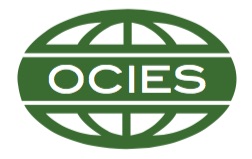I will use the left hand in school and the right hand at home: A two-eyed seeing approach
Keywords:
Two-eyed Seeing, Indigenous Knowledge, Dominant Western Knowledge, Indigenous methodology, Knowledge domination, Early Childhood Education, Early Childhood Care and Development.Abstract
Globally, there are increasing demands to decolonize education. As a result, the integration of Indigenous Knowledges and worldviews into Early Childhood Education has become a pertinent issue. Few studies have examined methodological frameworks for integrating Indigenous Knowledges into early learning in Ghana. This article examined the integration of Indigenous Knowledge into Early Childhood Education at a rural primary school. A two-eyed seeing Indigenous methodology was employed to integrate the local Kasena Indigenous Knowledge into a Kindergarten 2 classroom environmental studies topics. The ages of the children ranged from 6-8 years. As the holders of Indigenous knowledge, two Kasena Indigenous Elders helped to integrate Indigenous Knowledge into topics by visiting the school to teach and take children out on outdoor learning activities. After this, in-depth interviews were held with research participants. This paper focuses specifically on the methodology employed and highlights some of the outcomes. The study found that adopting a two-eyed seeing approach: challenged Western Knowledge’s dominance over Indigenous Knowledge in early learning; provided a framework to guide practice for integrating Indigenous Knowledge; and created awareness of the existence of an Indigenous worldview.
Downloads
Published
Issue
Section
License
The International Education Journal: Comparative Perspectives is the official journal of the Oceania Comparative and International Education Society. The IEJ, (ISSN 1443-1475), publishes a general volume bi-annually in July and December and also publishes Special Editions occasionally. It is a free, open-access scholarly journal, managed by volunteers. There are no article processing charges, or any charges to authors.
In relation to intellectual property, as of 2020, the IEJ: CP claims only first publication rights; copyright of all work published in the journal remains with the authors under Creative Commons copyright license CC-BY-ND (4.0). Author(s) retain all rights to their works, ensuring that reference to the International Education Journal: Comparative Perspectives is clearly stated on any copies made or distribution. Submissions must not involve third parties with a claim to copyright, and be the sole work of the author(s). It is the responsibility of the author(s) to secure permission to reproduce photographs, illustrations, figures or tables. Single images, tables or figures can be re-used . If more than a single image or table are to be re-used authors must attribute first publication to IEJ: CP notify the IEJ: CP Editor. Authors may also make derivative works which are subject to these limitations.
See https://creativecommons.org/licenses/by-nd/4.0/ for more detail.
Re-distributed or used material must be referenced to the International Education Journal: Comparative Perspectives.
